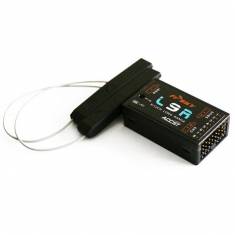-
Full Telemetry RSSI alarms (warns you of signal
reception problems before disaster can strike)
-
Self test of the transmitter antenna
-
16 channels (more when combined with external
module)
-
60 model memories
-
64 mixers, 9 flight modes
-
16 custom curves with 3-17 points each, 32 logic
switches
-
Voice or custom sound alerts
-
USB and SD card slot for system expansion
-
Long range system capable of up to 3 times the range
of current 2.4 systems
-
Quad bearing gimbals that are silky smooth
-
State-of-the-art open source software
-
Super low latency for ultra quick response (9ms)
-
Large 212 X 64 backlit LCD screen
-
Real-time data logging
-
Receiver lock (program locked to aircraft - limited
to FrSky receivers running PXX protocol)
-
JR Style module bay for additional RF modules and so
much more
-
Selectable flight mode (1, 2, 3, or 4)
-
2 timers, count up or down, throttle %, talking,
etc.
-
Trims - Adjustable from course to extra fine with
extended and exponential trims
-
Standard trainer jack
-
ARM Cortex M3 32-bit 60MHz
-
Integrates with CompanionTX – a FREE computer
program that is a transmitter setup buddy. CompanionTX (Windows/Mac/Linux) is
used to set-up models with the wizard, save, edit and share your models and
settings as well as simulate your transmitter or model setup.
-
USB connection for firmware upgrades, sound editing,
R/W to the microSD card and integrate with CompanionTX
-
Sticks and pots can be calibrated by the end user
-
Multiple language support (Radio arrives configured
for English language)
-
Open source community-driven firmware, so unlike
with major manufacturers if you need a special function or have good improvement
suggestions just raise your voice, and don't be surprised if it's implemented a
couple of days later! Visit http://www.openrcforums.com to meet the developers